13 Easy Crops to Harvest Before the First Frost Hits
As the first frost approaches, it’s time to focus on crops that mature quickly and can be harvested before the cold sets in. Whether you’re growing in a small garden or a larger plot, there are plenty of easy-to-grow vegetables that thrive in cooler weather and offer a rewarding harvest. From fast-maturing root vegetables to leafy greens and quick-growing fruiting plants, these crops are perfect for getting the most out of your garden before the temperature drops. Start planting now and enjoy fresh, homegrown produce throughout the fall season.
This post may contain affiliate links, which helps keep this content free. Please read our disclosure for more info.
Radishes

Radishes are incredibly fast-growing, often maturing in just 30 days. This makes them one of the easiest crops to fit into your garden before the first frost hits. Their rapid growth means you can plant them even in late summer or early fall and still enjoy a fresh crop before the cold weather sets in. Radishes also thrive in the cool temperatures of fall, which helps them develop their crisp texture and peppery flavor. Unlike many crops that struggle in the heat of summer, radishes grow best in cooler weather, making them perfect for a pre-frost harvest.
The key to growing radishes is ensuring they are planted in well-drained, loose soil. They don’t require much space and can be grown in rows or even containers, making them perfect for small gardens. Once they start sprouting, radishes grow quickly, and you can harvest them when they reach about an inch in diameter. If planted early enough, you can harvest multiple batches in a single season. Radishes are versatile in the kitchen, whether eaten raw in salads, roasted, or pickled, making them a great choice for late-season gardening.
Carrots
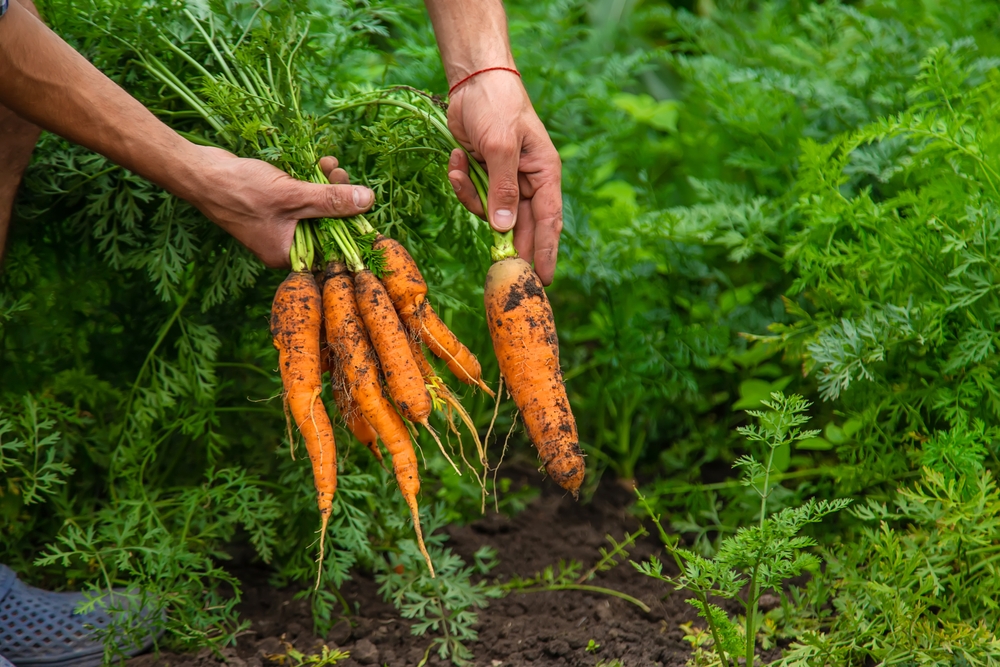
Carrots are another excellent crop to harvest before the first frost, particularly quick-maturing varieties such as Nantes or Chantenay. These varieties can mature in about 60 days, making them a reliable choice for fall harvesting. Carrots are well-suited to cooler temperatures, which help them develop their sweet, crisp flavor. The key to getting the most out of your fall carrot crop is planting them in loose, well-drained soil that allows the roots to grow deep and straight. Unlike some root vegetables, carrots can actually improve in flavor after a light frost, as the cold temperatures cause the starches in the roots to turn into sugars, enhancing their sweetness.
Carrots are versatile and can be harvested early for baby carrots or left to mature for larger roots. The best time to harvest is when they are about an inch or more in diameter, though some gardeners prefer to leave them in the ground longer for a more mature harvest. If a hard frost is expected, it’s best to harvest them sooner to prevent the roots from becoming damaged. Once harvested, carrots can be stored in a cool, dark place for extended freshness, making them an ideal crop for late-season harvesting that can last well into the winter months.
Lettuce

Lettuce is a fast-growing leafy green that thrives in the cool temperatures of fall. Varieties such as butterhead, romaine, and loose-leaf lettuce are particularly well-suited for growing in the weeks leading up to the first frost. These varieties mature in 30 to 60 days, making them ideal for a quick harvest before temperatures drop too much. Lettuce grows best in the mild temperatures of late summer and fall, and while it can tolerate light frost, it’s best to harvest before heavy freezes to preserve its texture and flavor. Lettuce grown in cooler weather tends to have a sweeter taste and more tender leaves, which makes it a delicious addition to fall salads and sandwiches.
For a continuous harvest, you can stagger your planting every couple of weeks. This method ensures that you always have fresh, tender leaves ready to pick before the frost hits. Lettuce thrives in moist, well-drained soil that is rich in nutrients. It also benefits from regular watering, especially as the weather cools down. With proper care, lettuce can be harvested multiple times, and if grown in containers or raised beds, it’s easy to manage even in smaller garden spaces. Harvesting lettuce before the first frost ensures it maintains its crispness and flavor, which can quickly deteriorate after exposure to cold temperatures.
Spinach
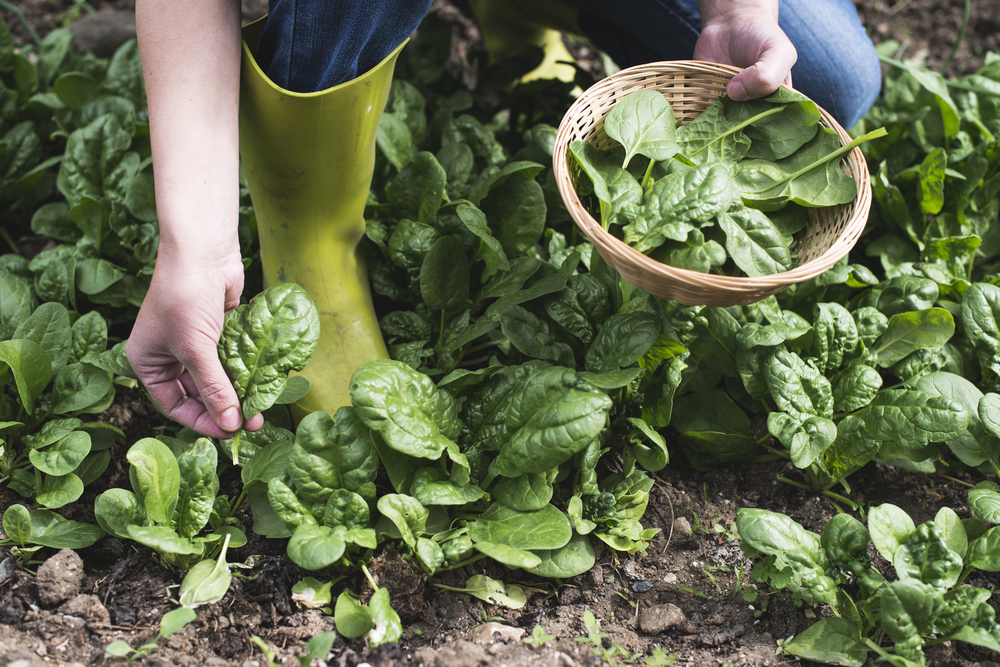
Spinach is another quick-growing crop that thrives in cool weather and can be harvested before the first frost. This hardy green typically matures in 40 to 50 days, making it an excellent choice for late-season gardening. Spinach thrives in the fall’s cooler temperatures, which help the leaves develop a rich, flavorful taste. It grows best in nutrient-rich, well-drained soil with plenty of sunlight, but it can also tolerate partial shade, which makes it a great choice for gardeners with limited space or sun exposure. In fact, spinach tends to be more flavorful and tender when grown in cooler temperatures, making it ideal for early autumn harvests.
Spinach plants grow quickly, with leaves ready for picking within weeks of planting. Once the plants are established, you can harvest them by picking individual leaves or cutting the entire plant for a larger crop. Spinach is a versatile green, perfect for salads, soups, or sautéed as a side dish. If you plant spinach early enough, you can harvest a full crop before the frost sets in, and with a little care, it can provide a healthy and abundant source of greens throughout the fall.
Kale

Kale is a hardy green that actually becomes sweeter after exposure to frost, making it an excellent crop to grow as winter approaches. While kale does take a little longer to mature than some other crops (typically 60 to 80 days), its frost tolerance means it can continue growing and producing well into the colder months. Kale thrives in cooler temperatures, which helps prevent it from becoming bitter, and it can withstand several light frosts without losing its flavor or texture. By planting kale early enough in the season, you can harvest the leaves before the first heavy frost hits.
Kale is also relatively low-maintenance, growing well in a variety of soil types, as long as it is well-drained. It benefits from regular watering and full sun but can tolerate partial shade. Once the leaves are large enough, you can begin harvesting them by picking the outer leaves, allowing the inner ones to continue growing. Kale is a nutritious and versatile green that can be used in salads, smoothies, soups, or sautéed dishes, making it a great crop to have on hand during the colder months.
Swiss Chard
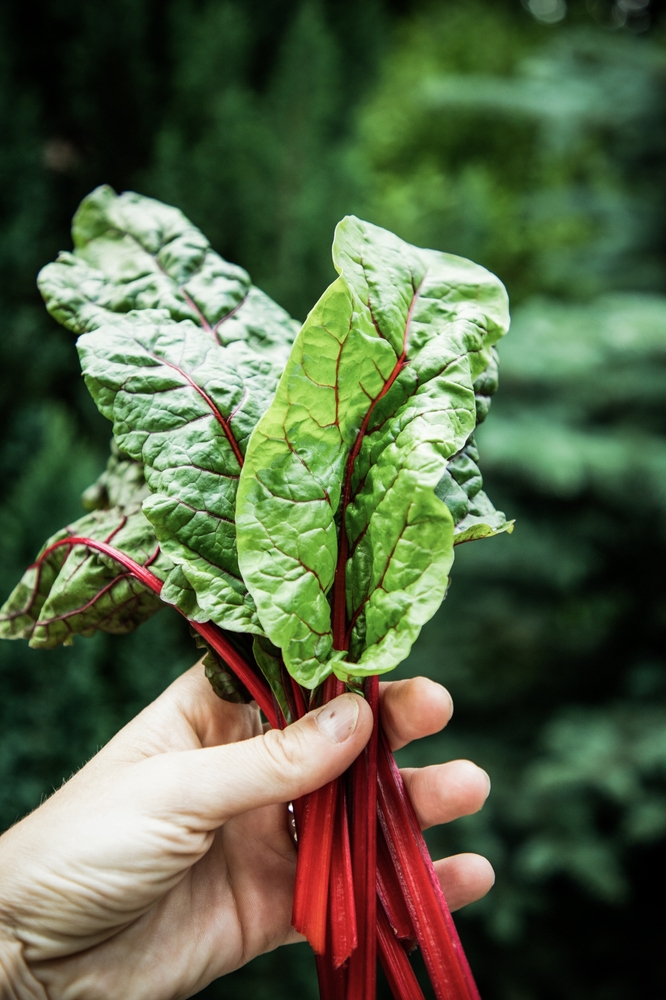
Swiss chard is another hardy green that thrives in cooler temperatures, making it perfect for a pre-frost harvest. With its vibrant red, yellow, or white stalks and deep green leaves, Swiss chard adds color and nutrition to your fall garden. This vegetable matures in about 50 to 60 days, so it can be harvested in time before the frost arrives. Swiss chard prefers moist, well-drained soil and can handle light frosts, which actually enhance its flavor by making the leaves sweeter.
Swiss chard is incredibly versatile in the kitchen, as both the leaves and stems are edible. You can harvest the outer leaves while leaving the inner leaves to continue growing, which provides a continuous harvest throughout the fall. The plant is also quite hardy and can tolerate various soil types, though it does best in nutrient-rich conditions. By planting it in early fall, you’ll have fresh, nutritious greens for salads, sautés, and soups, even as the temperatures drop.
Cucumbers
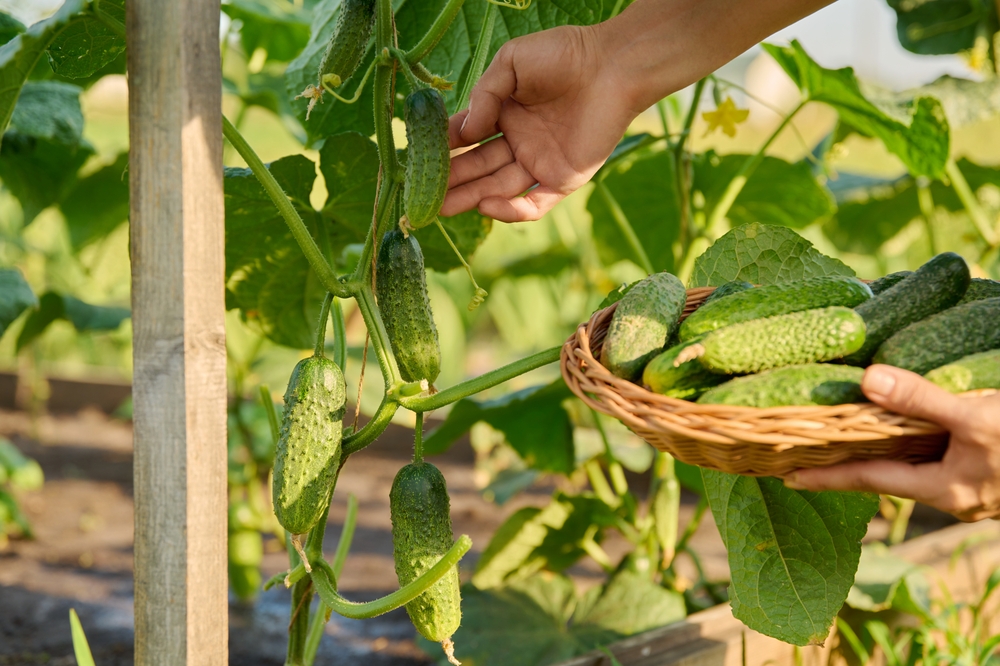
Cucumbers are a fast-growing fruiting plant that thrives in warm weather but can be harvested before the first frost hits. With varieties like “Bush Champion” that mature in just 50 days, cucumbers can still produce a plentiful crop in the late summer and early fall months. Though cucumbers generally prefer the warmer temperatures of summer, they can handle cooler nights and can be picked as long as the frost has not yet arrived. Be sure to harvest cucumbers before frost hits, as freezing temperatures can cause them to become soft and mushy.
Cucumbers are relatively easy to grow, especially in raised beds or containers where they can climb and spread. These plants need plenty of sunlight, so ensure they’re planted in a sunny spot for the best results. If your climate has a short growing season, look for smaller cucumber varieties, which tend to mature faster and are better suited for a late-season harvest. Harvesting them early, when they’re still firm and crisp, allows you to enjoy fresh cucumbers in salads, sandwiches, or even pickled.
Squash (Summer and Winter)
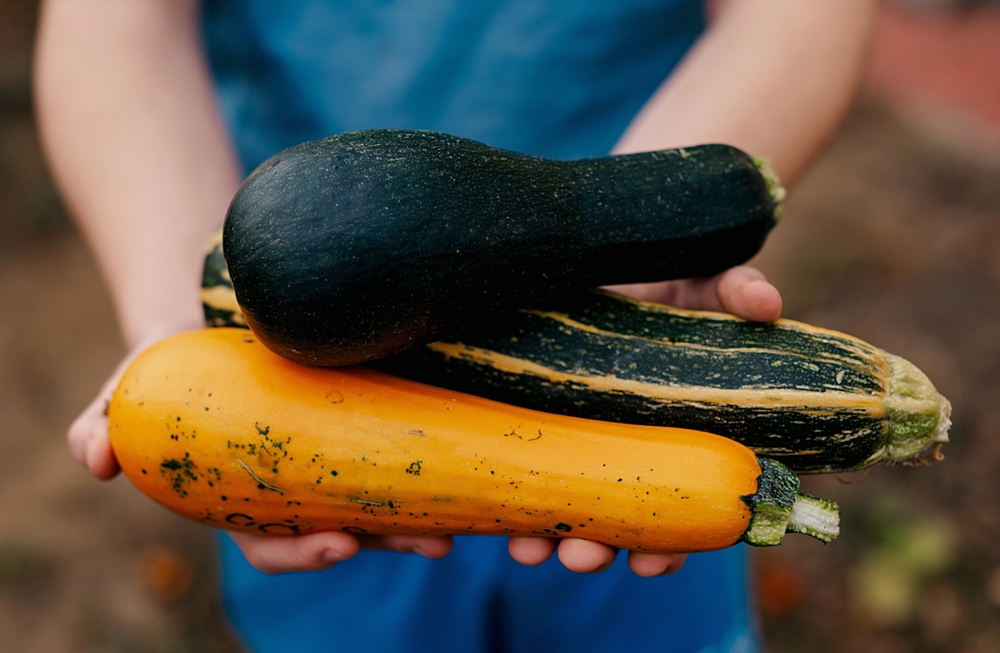
Squash, whether summer varieties like zucchini or winter varieties like acorn and butternut, are great crops to harvest before the first frost. Summer squash matures in about 50 to 60 days, and winter squash can take up to 80 days, but both can thrive in the fall weather, with summer squash being particularly suited for early harvesting before temperatures dip too low. Squash plants need full sun and well-drained, fertile soil to grow well, and they benefit from regular watering, especially in dry weather.
Summer squash, like zucchini, grows quickly, so you can expect to start harvesting about two months after planting. Winter squash, though taking longer to mature, has a longer shelf life and can be stored for months after harvesting. Harvest these plants before frost to preserve their flavor and texture, as frost can cause squash to become mushy. With its broad range of uses, squash is perfect for roasting, grilling, soups, and baking. Whether you’re growing a quick summer crop or a long-lasting winter variety, squash adds versatility to your fall harvest.
Zucchini

Zucchini is a type of summer squash known for its fast growth and ability to produce large quantities in a short period. Zucchini plants typically mature in about 50 to 60 days, making them a perfect choice for a late-season harvest. They grow best in full sun and well-drained soil, and they require regular watering to produce the best crop. As zucchini is harvested young, it can be picked before the frost hits to maintain its firmness and mild flavor.
Because zucchini plants are prolific, you can expect a high yield from just one or two plants. This makes it a great crop for both small and large gardens, as it’s easy to grow and gives a generous harvest. Zucchini can be eaten raw, grilled, baked, or added to soups and stir-fries, making it a versatile addition to your fall meals. Harvesting them early ensures you get tender, tasty zucchinis before the first frost causes any damage to the plant.
Beets
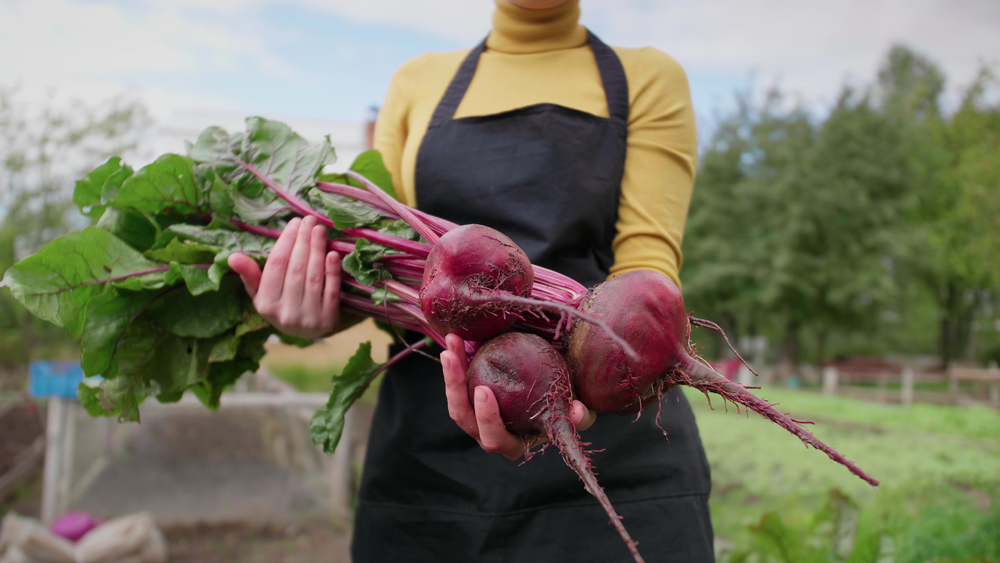
Beets are root vegetables that thrive in cooler weather, making them an excellent option for a pre-frost harvest. Varieties like “Detroit Dark Red” mature in about 55 to 60 days, so you can harvest them before the frost sets in. Beets grow best in loose, well-drained soil, which allows the roots to develop properly and helps prevent them from becoming too woody. The cooler temperatures of late fall can actually improve the flavor of the beets, making them sweeter and more tender.
Both the beetroot and the beet greens are edible, providing two harvests from a single plant. Beets are not only nutritious, but they can also store well after harvest, either by keeping them in a cool, dark place or by canning them for long-term use. Beets can be roasted, boiled, or pickled, and their greens are perfect for salads or sautéed dishes. If you plant beets early enough, you can enjoy both the roots and the greens in the fall.
Green Beans

Green beans, also known as snap beans, grow quickly and produce abundant yields in a short time. Varieties like “Blue Lake” or “Bush Beans” mature in 50 to 60 days, so they can be harvested before the first frost hits. These plants thrive in warm soil, and while they prefer full sun, they can also tolerate cooler temperatures as the season shifts. Green beans are best harvested when they’re young and tender before frost hits, as frost can cause the beans to become tough and inedible.
Green beans are easy to grow and require minimal care, making them ideal for new gardeners. They can be grown in rows or containers, and since they are a climbing plant, they can be trained to grow vertically, saving space in your garden. Green beans are versatile in the kitchen and can be steamed, sautéed, or used in casseroles. With proper care, you can have fresh green beans to enjoy before the frost puts an end to your harvest.
Peas

Peas are another quick-growing crop that can be harvested before the first frost. Varieties like “Sugar Snap” or “Snow Peas” mature in about 50 to 60 days, so they are a great option for late-season planting. Peas grow best in cool weather and actually prefer temperatures below 75°F, which makes them perfect for harvesting in the weeks leading up to the first frost. They do require well-drained, fertile soil and regular watering to produce a good yield.
Peas are typically grown vertically, using trellises or supports to allow the vines to climb. This makes them a great crop for small spaces or raised beds. Peas are a delicious and nutritious vegetable, perfect for fresh salads, stir-fries, or as a side dish. Harvesting them before the frost ensures that they are tender and sweet, as frost can cause peas to become tough and lose their flavor.
Mustard Greens

Mustard greens are hardy leafy vegetables that thrive in cooler temperatures and are perfect for harvesting before the frost arrives. These greens mature in about 40 to 50 days, and they grow best in nutrient-rich, well-drained soil with regular watering. Mustard greens are known for their peppery flavor, which becomes milder after a light frost. However, to preserve their best taste and texture, it’s best to harvest them before temperatures drop significantly.
Mustard greens grow quickly and can be harvested in stages, picking the outer leaves while allowing the inner leaves to continue growing. This method provides a continuous supply of fresh greens for your fall meals. Mustard greens are high in vitamins A and C and can be used in a variety of dishes, including salads, soups, and stir-fries. Harvesting them before the frost allows you to enjoy them at their peak flavor.
This article originally appeared on Avocadu.
